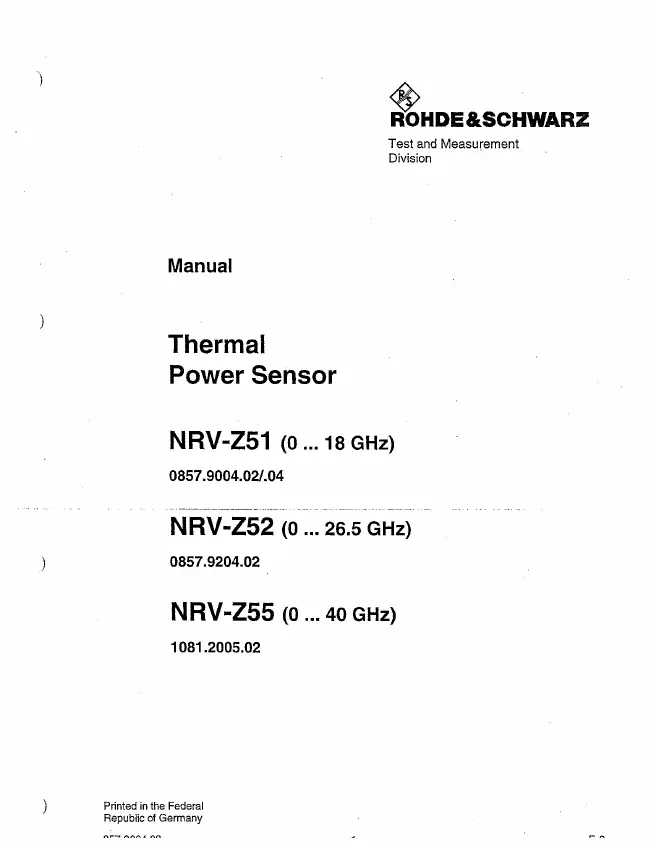Rohde & Schwarz - NRV-Z51 0857.9004.02 - Level Meter
Manufacturer:
No picture available!
Maybe you can
upload a pic
for the
Rohde & Schwarz NRV-Z51 0857.9004.02 ?
If you have any other manuals for the
Rohde & Schwarz NRV-Z51 0857.9004.02
you can
upload the files here.
.
Equipment:
NRV-Z51 0857.9004.02
Date:
1999
Category:
Group:
Sub Group:
Information
Power sensors NRV-Z51, NRV-Z52 and NRV-Z55 are thermal power
sensors for basic instruments NRVS, NRVD, URV35 and URV55.
They permit power measurement from 1 pW to 100 mW within the
frequency ranges DC ... 18 GHz (NRV-Z51), DC ... 26.5 GHz
(NRV-Z52) or DC ... 40 GHz (NRV-Z55) in systems having a
characteristic impedance of 50
The thermal conversion principle always permits measurements
of the RMS value independently of the waveform and
modulation of the test signal. Depending on whether the
measured value is output as a power and/or a power level or
as a voltage, the average power (and/or the equivalent power
level) or the RMS value of the voltage is displayed.
All measuring heads are d.c. coupled so that even power in
the audio-frequency range can be measured.
1.2 Design and Functioning
The power sensor contains a thermo-electric transducer made
of silicon by means of semiconductor technology. Due to the
power supplied, the 50-Q termination situated on it heats
up. immediately next to this resistor there is a
thermoelement generating a direct voltage proportional to
the heating. As termination and thermoelement are
dc-decoupled, the power sensors do not contain, coupling
capacitors. This means that even d.c. powers can be
measured, and there is no lower cut-off frequency below
which matching and frequency response deteriorate again.
The direct voltage generated by the thermoelement is
amplified by a low-noise amplifier of high sensitivity
within the sensor and supplied to the basic unit for further
processing.
All power sensors contain a data storage in which the
parameters obtained during calibration in ---prad u<Sion-a
re^tored-in a-narv-vola-tiie-memoryr^The-ba si
e-i-ns-trument-reads-out-these~data-arid ta kes account of
them when indicating the power measured.
Linearity correction of the measured values is effected
automatically with the aid of the correction coefficients
stored. For temperature correction, the temperature of the
measuring head is evaluated additionally via a temperature
sensor. For measurements with frequency response correction,
the measuring frequency must be entered via keyboard, remote
control interface or an analog control input.
User manual
Manual type:
User manual
Pages:
18
Size:
336.8 KB
Language:
english
Revision:
Manual-ID:
Date:
January 1999
Quality:
Scanned document, all readable.
Upload date:
Dec. 14, 2016
MD5:
b6d572ae-80c2-7e7f-a264-bd3869b20b55
Downloads:
1568
